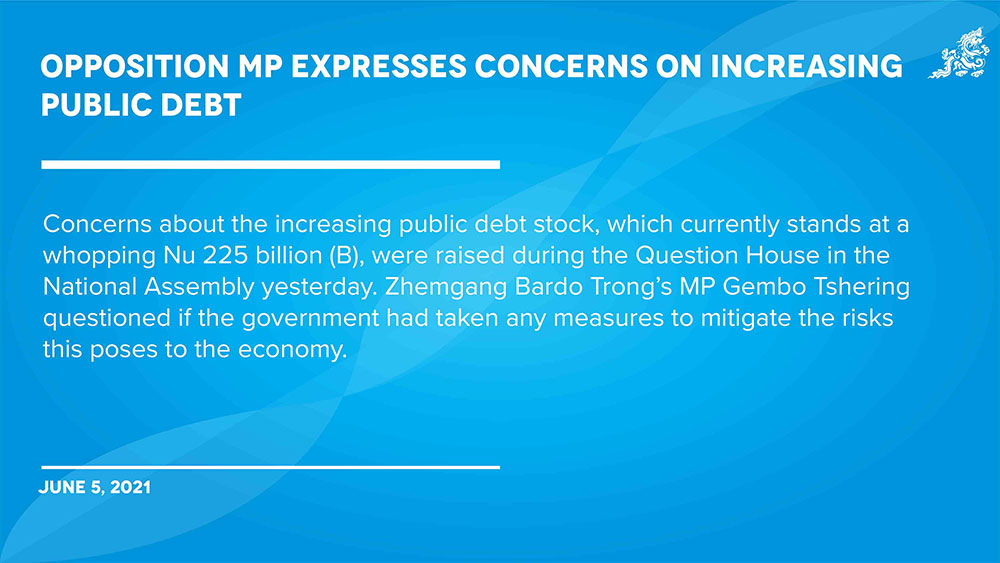Zhemgang’s Bardo Trong MP Gembo Tshering during the Question House in the National Assembly yesterday expressed concerns on the increasing public debt stock, which stands at Nu 225 billion (B) or 120 percent of the Gross Domestic Product (GDP).
“On the one hand, the government has been saying that it has enough money for capital expenditure, but on the other, borrowings are increasing,” he said.
He said the fiscal deficit of Nu 19B in the annual budget 2021-22 was expected to further increase the debt burden and asked if the government had taken any measures to mitigate the risks it poses to the economy.
Finance Minister Namgay Tshering said that the debt was accumulated over the years and denied that the public debt situation had reached an alarming level.
According to him, 96 percent of the debts are external and the rest are internal and 75 percent of the external debts are related to hydropower projects, which are self-liquidating. Accordingly, 25 percent of the external debts are non-hydro.
He said that the non-hydro debt-to-GDP ratio was also 25 percent. The government’s public debt management policy prescribes that non-hydro debt should not exceed 35 percent of GDP.
“We are guided by the public debt management policy and the borrowings have been invested in productive activities such as improvement of urban amenities, rural electrification programmes and construction of affordable houses,” he said.
Lyonpo Namgay Tshering said that the government was forced to borrow for maintaining the convertible currency reserve, a large portion of which otherwise was earned by the tourism sector. “The present level of public debt will not affect our sovereignty,” he said.
He said that the public debt stocks of the USA and Singapore were 129 percent and 131 percent of GDP, respectively. The most of their public debts are in local currencies.
However, most of Bhutan’s debt stocks are in foreign currencies. The debt to GDP ratio is an indicator of economic stability.
The 12th Plan target was to maintain non-hydro debts at 15.9 percent of GDP. The government, however, says that the loans are concessional.
The external debt to Gross Domestic Product (GDP) ratio is projected to peak at 125.9 percent in the fiscal year 2022-23 before sliding to 113.7 percent in the fiscal year 2023-24.
Among other factors, the projected loan disbursement for Kholongchu and Punatsangchhu-I hydropower projects are also expected to contribute towards the increase in the external debt-to-GDP ratio.
Officials say that improvement in public debt situation will depend on how soon Punatsangchhu I would be commissioned. The commissioning of the 1,200 MW run-of-the river project has been deferred to 2024.
By MB Subba


